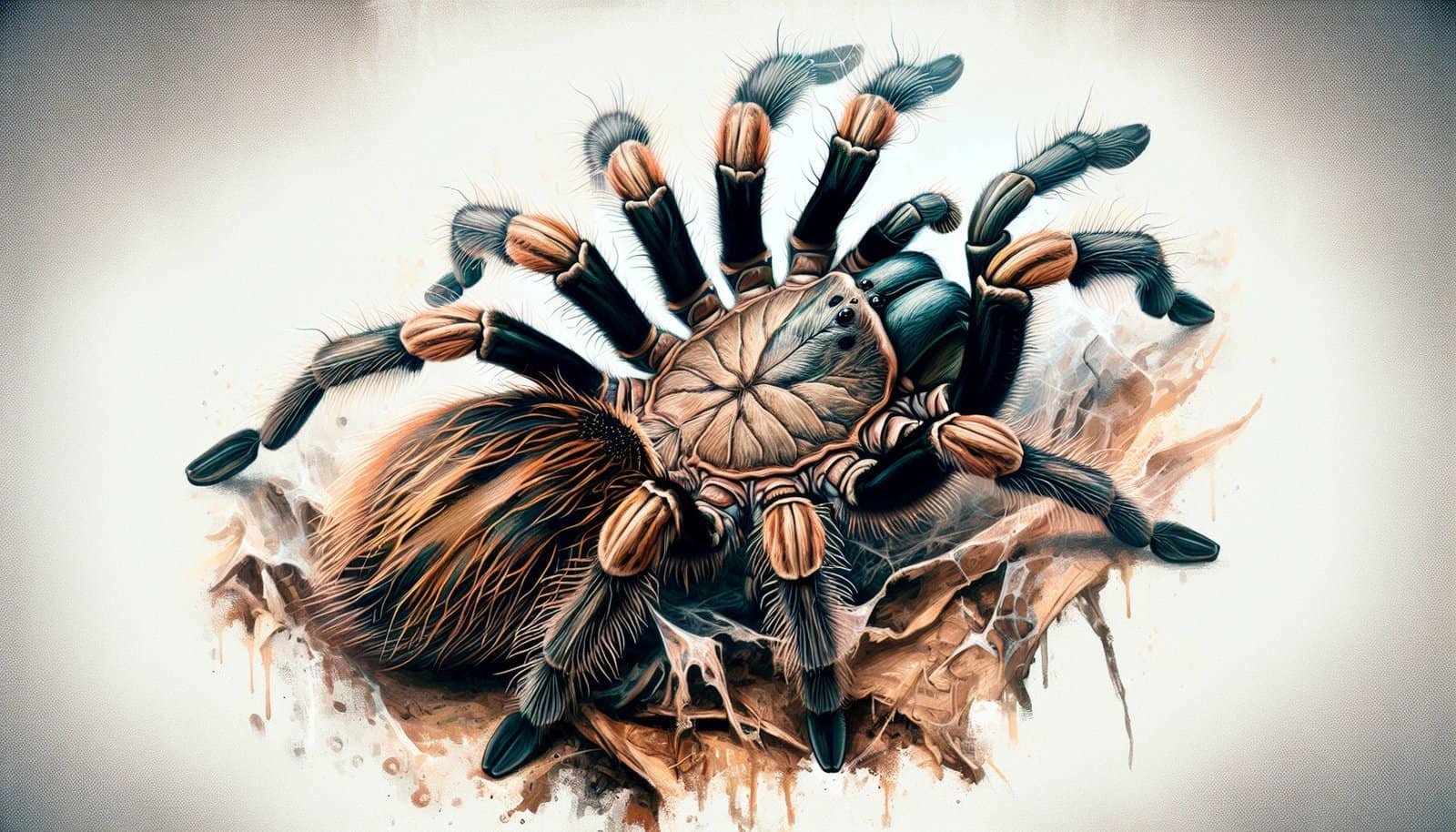Tarantulas are fascinating creatures that often spark curiosity and awe. But have you ever wondered how these eight-legged arachnids manage to protect themselves from predators while undergoing the vulnerable process of molting? In this article, we will explore the intriguing question of whether tarantulas have developed any strategies to avoid predation during this delicate period. Prepare to be captivated as we uncover the secrets behind these incredible creatures’ survival techniques.
Introduction
Tarantulas are fascinating creatures, often capturing our attention with their unique appearance and behaviors. One fascinating aspect of their life cycle is the process of molting, where they shed their exoskeleton to grow. However, this vulnerable period can leave them susceptible to predation. In this article, we will explore the strategies tarantulas employ to avoid becoming prey during molting, the predators they face, and the implications for their survival and population dynamics.
Understanding Tarantula Molting
The molting process in tarantulas
Molting is an essential part of tarantula growth and development. When it’s time to molt, a tarantula will create a secure molting chamber by spinning silk and covering it with substrate. Once inside, it will release enzymes to soften its old exoskeleton, making it easier to escape. The tarantula then pushes against its hardened shell until it breaks free, revealing a softer, larger exoskeleton underneath. This process can take hours or even days to complete.
Frequency and duration of molting
The frequency of molting in tarantulas varies depending on factors such as species, age, and environmental conditions. Generally, younger tarantulas molt more frequently than adults. Some species molt as often as every few months, while others may only molt once or twice a year. The period between molts, known as the intermolting period, allows the tarantula to grow and regenerate lost body parts.
Vulnerability during the molting process
While molting is a necessary part of a tarantula’s life, it also comes with risks. During this period, tarantulas are particularly vulnerable to predation. Their soft exoskeleton leaves them defenseless, and they are unable to move quickly or respond to threats effectively. This vulnerability makes it crucial for tarantulas to have strategies in place to avoid becoming prey.

Predators of Tarantulas
Common predators of tarantulas
Tarantulas face a range of predators in their natural habitats. Some of the most common predators include birds, reptiles such as snakes and lizards, mammals like rodents and small carnivores, and other arthropods like centipedes and scorpions. These predators have adapted various strategies to take advantage of tarantula vulnerabilities during molting.
Predation risk factors for tarantulas
Several factors influence the susceptibility of tarantulas to predation during molting. Firstly, the visibility of the molting site plays a crucial role. Exposed or easily accessible locations increase the risk of predation. The size and strength of a tarantula’s predators also matter; larger predators may have an advantage over smaller tarantulas. Environmental factors like habitat complexity and disturbance levels can also affect the likelihood of predation.
Importance of Avoiding Predation During Molting
Survival implications for tarantulas
Avoiding predation during molting is crucial for the survival of tarantulas. Given the vulnerability they face, successful molting is essential for their growth and development. Failed molts, where the tarantula is unable to shed its old exoskeleton completely, can have severe consequences, leading to deformities, injuries, or even death. By avoiding predation during molting, tarantulas increase their chances of survival and future reproductive success.
Effects of predation during molting on population dynamics
Predation during molting can have significant effects on tarantula populations. If predation rates are too high, it may lead to population declines, especially if the predators target specific life stages more intensely. Reduced population sizes can have cascading effects on ecosystem dynamics, disrupting prey-predator relationships and potentially impacting other organisms that rely on tarantulas as a food source.

Adaptive Strategies for Avoiding Predation During Molting
Selection of secure molting locations
Tarantulas have evolved to select secure molting locations, often concealed and protected from predators. They may choose crevices, burrows, or underground chambers to reduce the risk of exposure. Selecting an appropriate molting site increases their chances of successful molting and minimizes the likelihood of predation.
Burrowing and concealment
Burrowing is another adaptive strategy used by tarantulas to avoid predation during molting. By digging burrows, they create a safe space where they can molt without being easily spotted by predators. The burrows provide a physical barrier and increase the difficulty for predators to reach the vulnerable tarantulas.
Timing and synchronization with environmental factors
Tarantulas often time their molting with certain environmental factors to reduce the risk of predation. For example, they may molt during periods of low prey abundance, reducing the attraction of predators to their molted exoskeleton. Additionally, synchronization with environmental cues such as temperature or humidity changes can provide an added advantage by making it harder for predators to locate molting tarantulas.
Chemical camouflage
Some tarantulas employ chemical camouflage as a defense strategy. By using pheromones or chemicals found in their surroundings, they can disguise their scent, making it challenging for predators to locate them during molting. This chemical camouflage adds an extra layer of protection and reduces the likelihood of predation.
Social cooperation and communal molting
Certain species of tarantulas engage in social cooperation and communal molting. By molting together, they increase the overall security of the group. The presence of multiple individuals may deter predators or enhance their chances of escaping predation. This cooperative behavior is an effective strategy for avoiding predation during molting.
Ingestion of toxic prey or plants
Some tarantulas incorporate toxic prey or plants into their diet to acquire toxins that make them unpalatable or even toxic to predators. By ingesting these substances, they become less attractive or even harmful to potential predators, reducing the risk of predation during molting.
Development of physical defenses
In response to predation pressure, tarantulas have evolved physical defenses. Some species have urticating hairs, specialized bristles that they can kick off as a defense mechanism. These hairs can cause irritation or injury to predators, giving the tarantulas a chance to escape.
Evidences of Predation Avoidance Strategies During Molting
Observational studies on tarantula molting behavior
Observational studies have provided valuable insights into the strategies tarantulas employ during molting to avoid predation. Researchers have documented tarantulas selecting secure molting sites, timing their molts with environmental cues, and utilizing chemical camouflage. These observations contribute to our understanding of how tarantulas minimize predation risk during this vulnerable period.
Experimental studies on predation avoidance during molting
Experimental studies have also shed light on predation avoidance strategies in tarantulas. Researchers have simulated predator encounters or exposed molting tarantulas to predators under controlled conditions. These experiments have revealed behavioral responses, such as increased aggression, defensive posturing, or a higher propensity to retreat when faced with potential threats.

Coevolutionary Relationships: Adaptations of Predators
Predator adaptations in response to tarantula molting
Predators that target tarantulas during molting have also evolved adaptations to exploit this vulnerability. For example, some predators have developed specialized appendages or behaviors that allow them to access tarantula molting sites or extract tarantulas from their burrows more easily. This ongoing evolutionary arms race between tarantulas and their predators plays a significant role in shaping their behaviors and adaptations.
Evolutionary arms race between tarantulas and predators
The arms race between tarantulas and their predators is a continuous process of adaptation and counter-adaptation. As tarantulas develop strategies to avoid predation, predators respond with new techniques to overcome these defenses. This coevolutionary relationship highlights the importance of predation avoidance during molting for the survival and persistence of tarantulas.
Implications for Conservation and Captive Tarantula Care
Conservation implications of predation during molting
Understanding the predation risks tarantulas face during molting is crucial for their conservation. Conservation efforts should consider the factors that contribute to successful molting and minimize predation pressure. Protecting habitats with suitable dens and burrowing opportunities, reducing disturbance, and promoting predator diversity are some strategies that can help preserve tarantula populations.
Minimizing predation risk in captive tarantula environments
For tarantulas kept in captivity, minimizing predation risk during molting is equally important. Providing secure and suitable enclosures that mimic natural hiding places, maintaining optimal temperature and humidity levels, and avoiding disturbances are necessary steps to ensure the well-being and successful molting of captive tarantulas.

Future Research Directions
Unexplored aspects of predation avoidance in tarantulas
While we have made significant progress in understanding predation avoidance during molting in tarantulas, there are still many aspects yet to be explored. Future research could focus on the specific chemical compounds involved in tarantula camouflage, the role of social cooperation in predation avoidance, and the effectiveness of different protective strategies under varying environmental conditions.
Effectiveness of different strategies and their ecological implications
Investigating the effectiveness of different predation avoidance strategies employed by tarantulas can provide valuable insights into their ecological implications. Understanding which strategies are most successful and their impact on predators and prey dynamics can help researchers and conservationists develop effective strategies for protecting tarantulas and maintaining healthy ecosystems.
Conclusion
Tarantulas have evolved a range of adaptive strategies to avoid predation during molting. Through selection of secure molting locations, burrowing and concealment, timing their molts, employing chemical camouflage, engaging in social cooperation, ingesting toxic prey or plants, and developing physical defenses, tarantulas increase their chances of survival during this vulnerable period. Continued research into these strategies and their ecological implications will contribute to our understanding of tarantula ecology and aid in their conservation efforts.

